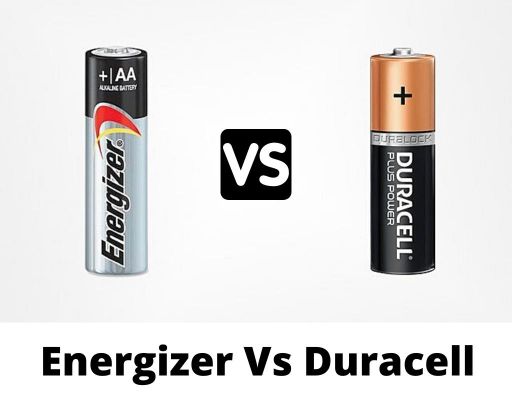According to uses, there are so many types of batteries that follow Battery Council International’s letter. These types are decided by the physical dimension, terminal, and type of the vehicle.
Group 34 and 48 batteries have some dissimilarities for their different shapes and terminal differences. Group 34 battery features 20h capacity in the 50-75 Ah Range. On the other hand, the 48 battery comes with 48 AGM in the 60-70 Ah range.
There are more differences, and let’s have a discussion on the comparison of Group 34 vs 48 batteries.
What Does Battery Group Mean?
Battery groups indicate the physical dimensions, terminals, and types of those respective batteries. In a word, it prefers the functionality of a battery, like in which term it is used for or where it will fit, and more.
These battery groups are decided by Battery Council International. Sometimes it refers to the polarity, but the battery groups are generally considered according to their size.
However, a larger number doesn’t always mean a larger size. For example, Group 34 batteries are larger than group 51 batteries. In the automobile sector, marine and other places, battery groups matter the most.
If you can understand which battery will serve you in the best way, you can easily bring out the best productivity from the battery.
What is Group 34 Battery?
Group 34 is a medium-large but powerful battery group with a weight range of 37 to 51 pounds, which differs according to its chemicals.
It features 20h capacity with the 50-75 Ah range, providing 750-900 CCA. Commonly BCI Group 34 battery has a dimension of 10.25 x 6.8125 x 7.875 inches. It can provide you with 140-145 minute reserve time.
Where Do We Use Group 34 Battery?
Group 34 batteries are mostly used in automobile, marine, and off-the-grid operations for starting. They are great as starting batteries.
There are also dual-purpose and deep cycle batteries from this group with excellent deep cycle recovery and a large number of charging/discharging cycles.
There are too many Group 34 batteries in the market. Some are made for specialized starting, some for dual purpose, and some for deep cycle. You have to know which one you need the most.
What is Group 48 Battery?
Group 48 batteries are also mid-range batteries which mean they are neither too large nor too small. The physical dimensions of Group 48 batteries have a dimension of 12 1/16 x 6 7/8 x 7 9/16 inches.
Generally, batteries labeled as L6 or H3 are considered Group 48 batteries. If the battery is placed as front-sided, the right side of the battery is considered the positive terminal.
Where Do We Use Group 48 Battery?
Group 48 batteries are commonly used for automotive, marine, and light industrial engineering for starting or dual-purpose, which supplies power when the main power supply is not present.
BCI Group 48 batteries are designed as spill proof, maintenance-free AGM with high resistance to vibrations and mechanical shocks.
Group 34 vs 48 Batteries: A Detailed Comparison
Group 34 and Group 48 have a clear difference between them. They are different in shape, made for different uses. Let’s have a glance at the key differences between these two types of batteries.
| Features | Group 34 | Group 48 |
| Dimension | 10.25 x 6.8125 x 7.875 inches | 12 1/16 x 6 7/8 x 7 9/16 inches |
| Reserve capacity | 100-145 minutes | 120-140 minutes |
| Cold Cranking Amps | 750-900 | 720-800 |
| Capacity | 20 AGM in the 50-75 Ah range | 48 AGM in the 60-70 Ah range |
| Weight | Between 37-51 pounds | Between 45-54 pounds |
Group 34 and Group 48 batteries both have a right-sided positive terminal. They are commonly used for starting or dual-purpose in automotive and marine sectors and power up the light commercial engines.
Size and Weight
From group 34 and group 48, they are mostly lightweight, and they weigh around 40-50 pounds. So, you can easily move them from one side to another. Most of the group 34 and group 48 batteries have a handle to move them.
However, if you want the lighter one between these two, you can go with group 34 batteries. Group 48 batteries are slightly bulkier than the counterpart.
In this particular sector, Group 34 and Group 48 have a small difference, but both of them are portable and lightweight in a word.
Terminal Position
For both of these batteries, the positive terminal is located on the left-hand side. However, there can be some exceptions. Another thing is, if you buy a 34R battery instead of a group 34 battery, they will have their positive terminal on the right-hand side.
CCA and MCA Rating
CCA rating is yet another important feature to look at. Group 34 batteries have a CCA rating of 750-900.
The starting group 34 batteries feature 740-800 CCA, while the deep cycle ones feature 740-900 CCA. They have a maximum 1050 amp of MCA rating.
On the contrary, group 48 batteries have a CCA rating of 720-800, and the MCA rating is 800-930 amps.
RC Rating
RC (Reserve Capacity) value is an important factor to check before buying any battery. It indicates the time that the battery can properly power a vehicle without falling below the minimum voltage needed to run the vehicle.
So, the more the rating is, the more time you get to repair your vehicle.
Group 34 starting batteries typically have an RC rating of 100-120 minutes. But the RC rating for dual purpose or deep cycle batteries from this group is 120-135 minutes. Maximum, it can even get to 160 minutes.
On the other side, the RC rating for Group 48 batteries is 120-140 minutes.
Which One To Choose – Group 34 or Group 48 Battery?
It actually depends on the features of the specific battery you want to purchase. There are many batteries in the group 34 section, which are better than group 48 batteries and vice versa.
If you want a Cold Cranking Amps of around 750-900, you should go for group 34. And if you want around 720-800 CCA, you can go for group 48.
So you can’t just buy a battery because it belongs to a group. Rather you have to compare the features and buy the best one within your budget. Always buy the battery that suits your vehicle and has a better feature than your previously used one.
Some recommended Group 34 Batteries:
Optima Batteries OPT8002-002 34 RedTop: This battery comes with optimal starting power even in bad weather. It has 12-Volt, 800 Cold Cranking Amps with 50Ah capacity. It weighs around 37.9 pounds. The reserve capacity rating is 100 minutes for constant performance.
Optima OPT8016-103 Batteries D34M BlueTop: This battery works well as a boat battery or RV battery and is mountable in virtually any position. The RC rating is around 120 minutes with 750 CCA, 55 Ah C20 capacity and 12v. It weighs around 43.5 pounds and offers optimal starting power even in bad weather.
Some Recommended Group 48 Batteries:
ACDelco Gold 48AGM AGM BCI: Comes with Silver Calcium stamped alloy and high density negative paste, which increase cycle life and improves performance. The calcium lead positive grid enhances the conductivity and allows for low resistance.
Delphi BU9048 MaxStart AGM: Comes with 760 CCA and 120 R.C. Its extended cold cranking amps delivery means more power and 20x the vibration resistance of conventional batteries. Again, the superior corrosion resistance sealed housing offers proper venting system.
Conclusion
If you have gone through the article, you should know what actually battery group is and the key differences between group 34 vs 48 batteries. From powering your engine to push some electronic machines to work, batteries are always important to all.
To sum up, whenever you are buying a battery, you should compare the features and see which one is compatible with your vehicle and have the best features.
Related Posts:


